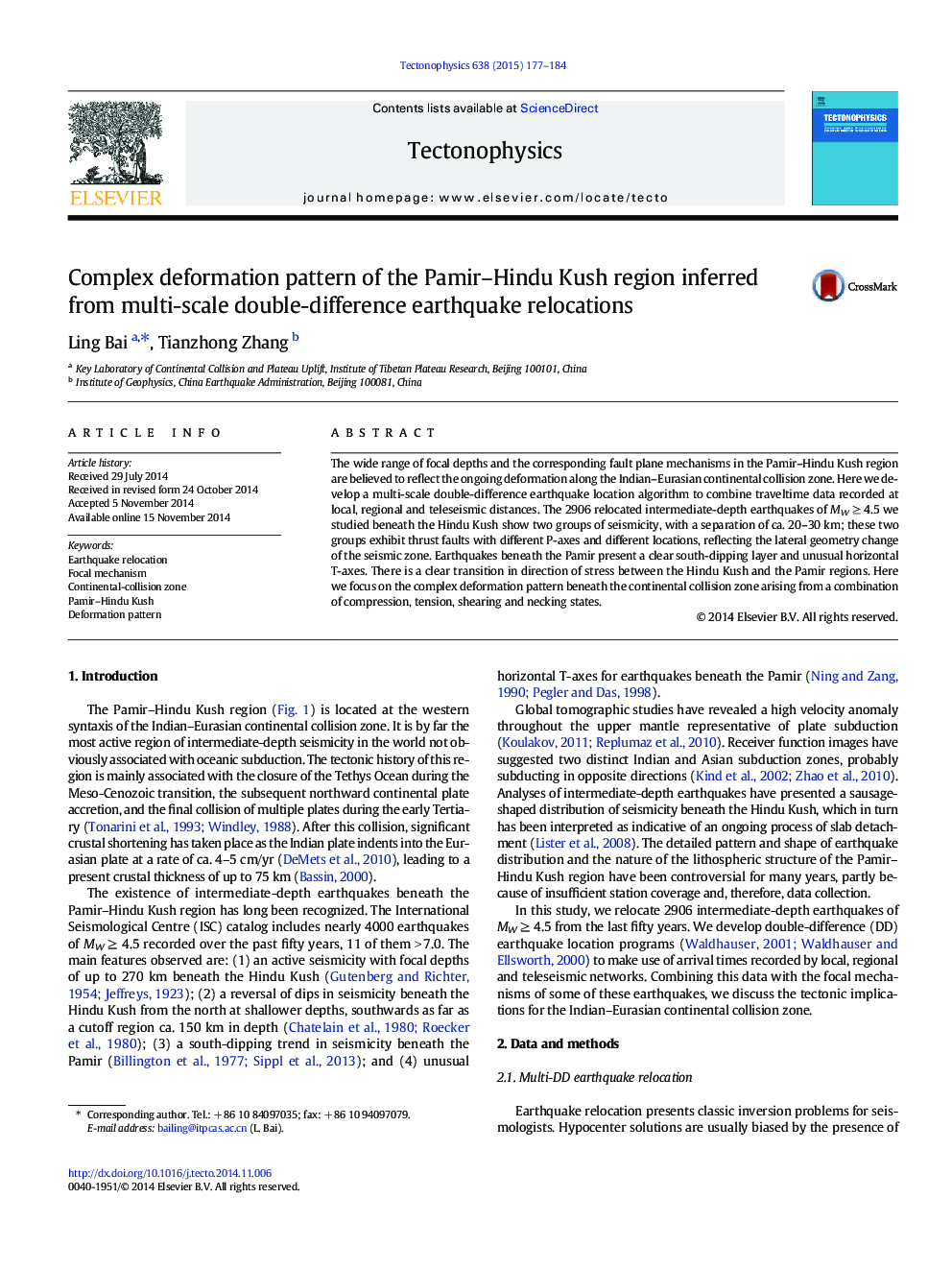| Article ID | Journal | Published Year | Pages | File Type |
|---|---|---|---|---|
| 6433745 | Tectonophysics | 2015 | 8 Pages |
â¢We develop a multi-scale double-difference earthquake relocation algorithm.â¢We relocate 2906 intermediate-depth earthquakes of MW â¥Â 4.5 in the Pamir-Hindu Kush.â¢The deformation pattern beneath the Indian-Eurasian collision zone is complex.â¢Tension, shearing and necking are combined with continental plate subduction.
The wide range of focal depths and the corresponding fault plane mechanisms in the Pamir-Hindu Kush region are believed to reflect the ongoing deformation along the Indian-Eurasian continental collision zone. Here we develop a multi-scale double-difference earthquake location algorithm to combine traveltime data recorded at local, regional and teleseismic distances. The 2906 relocated intermediate-depth earthquakes of MW â¥Â 4.5 we studied beneath the Hindu Kush show two groups of seismicity, with a separation of ca. 20-30 km; these two groups exhibit thrust faults with different P-axes and different locations, reflecting the lateral geometry change of the seismic zone. Earthquakes beneath the Pamir present a clear south-dipping layer and unusual horizontal T-axes. There is a clear transition in direction of stress between the Hindu Kush and the Pamir regions. Here we focus on the complex deformation pattern beneath the continental collision zone arising from a combination of compression, tension, shearing and necking states.
